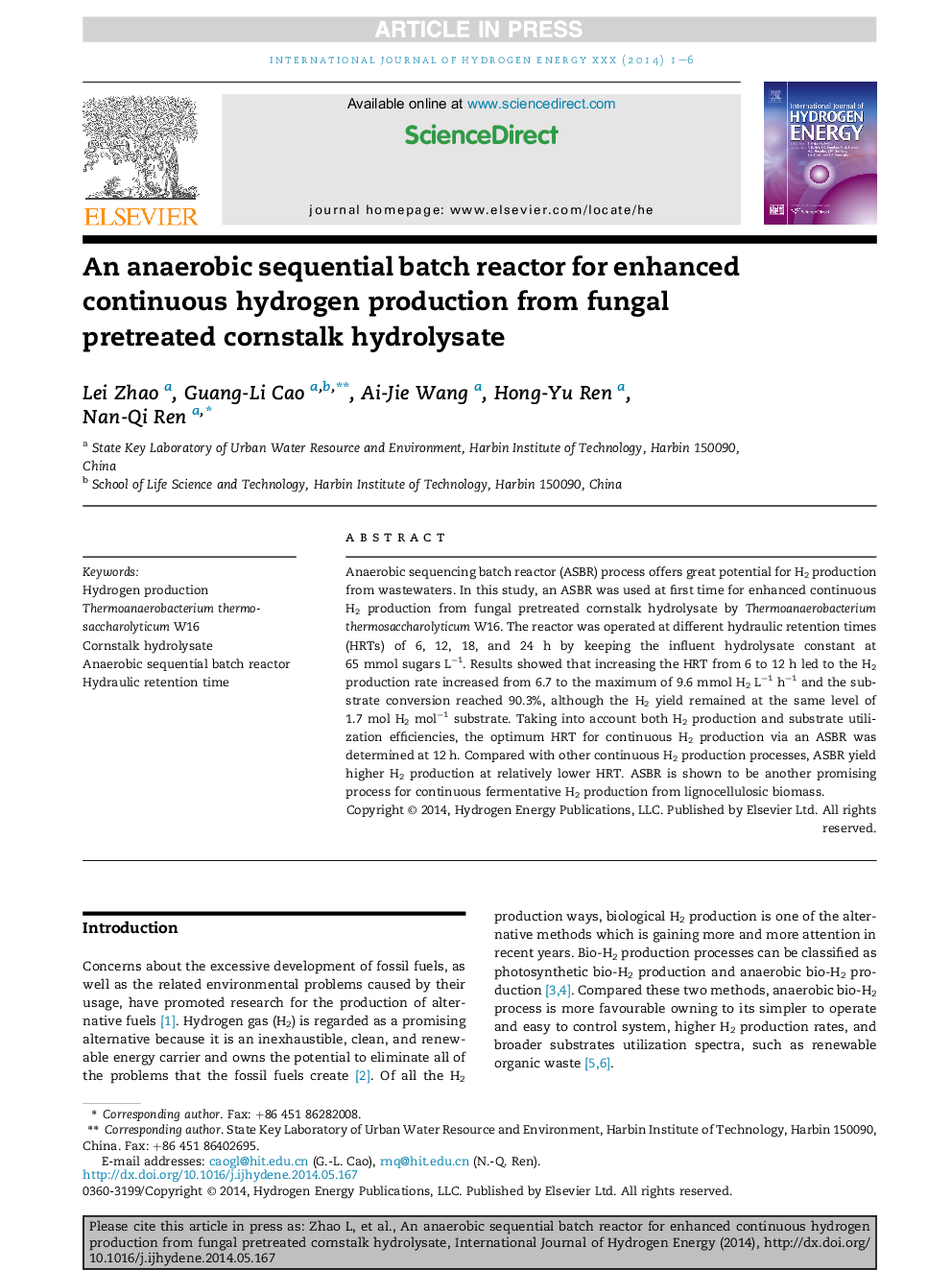| Article ID | Journal | Published Year | Pages | File Type |
|---|---|---|---|---|
| 7717838 | International Journal of Hydrogen Energy | 2014 | 6 Pages |
Abstract
Anaerobic sequencing batch reactor (ASBR) process offers great potential for H2 production from wastewaters. In this study, an ASBR was used at first time for enhanced continuous H2 production from fungal pretreated cornstalk hydrolysate by Thermoanaerobacterium thermosaccharolyticum W16. The reactor was operated at different hydraulic retention times (HRTs) of 6, 12, 18, and 24 h by keeping the influent hydrolysate constant at 65 mmol sugars Lâ1. Results showed that increasing the HRT from 6 to 12 h led to the H2 production rate increased from 6.7 to the maximum of 9.6 mmol H2 Lâ1 hâ1 and the substrate conversion reached 90.3%, although the H2 yield remained at the same level of 1.7 mol H2 molâ1 substrate. Taking into account both H2 production and substrate utilization efficiencies, the optimum HRT for continuous H2 production via an ASBR was determined at 12 h. Compared with other continuous H2 production processes, ASBR yield higher H2 production at relatively lower HRT. ASBR is shown to be another promising process for continuous fermentative H2 production from lignocellulosic biomass.
Related Topics
Physical Sciences and Engineering
Chemistry
Electrochemistry
Authors
Lei Zhao, Guang-Li Cao, Ai-Jie Wang, Hong-Yu Ren, Nan-Qi Ren,
